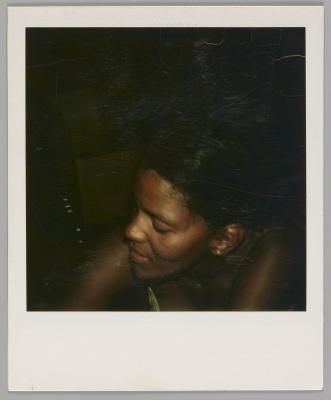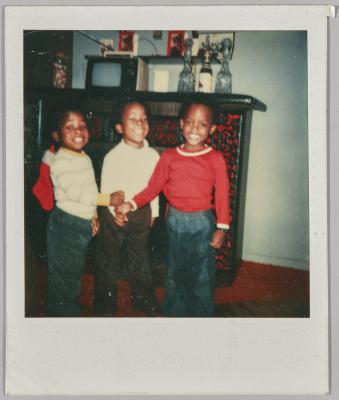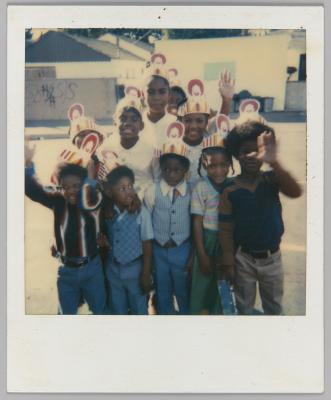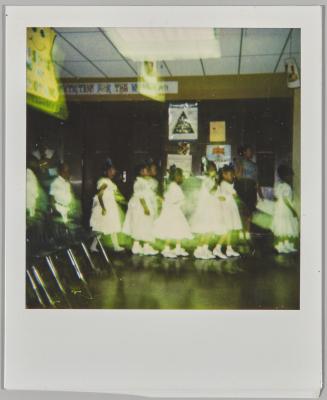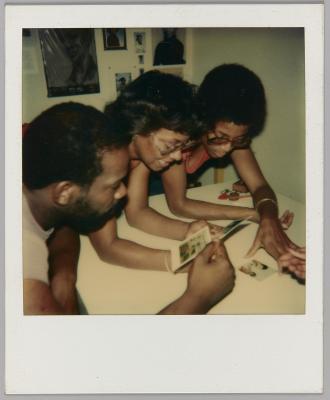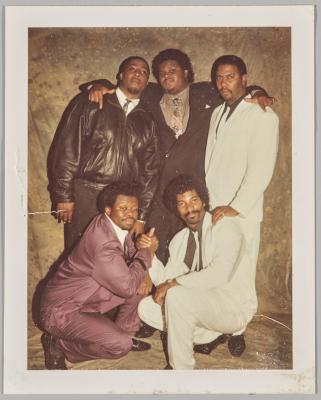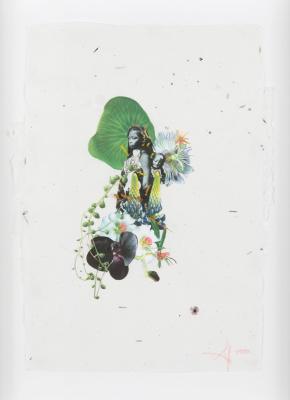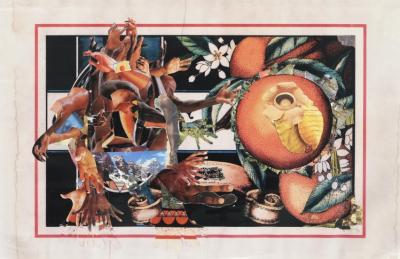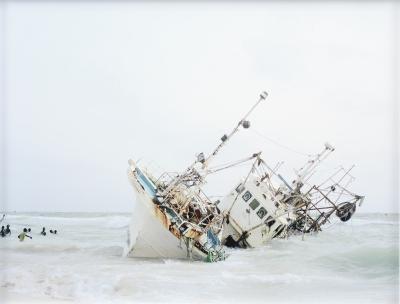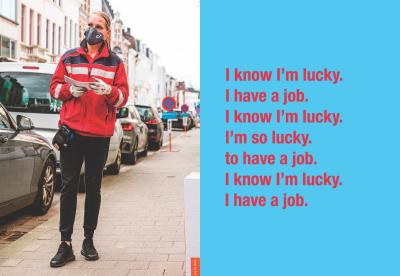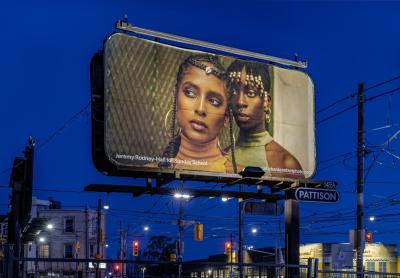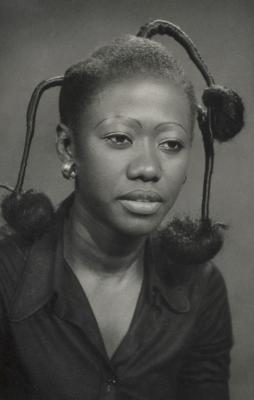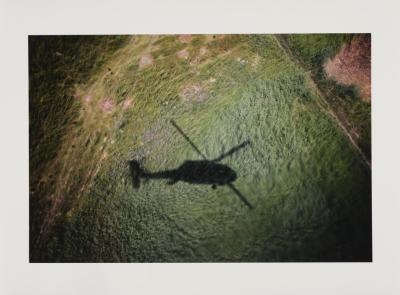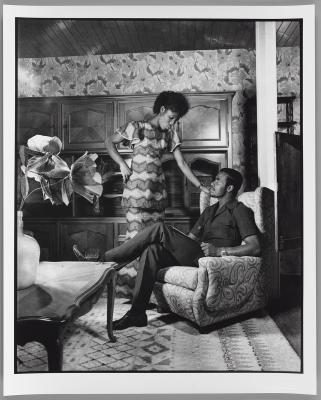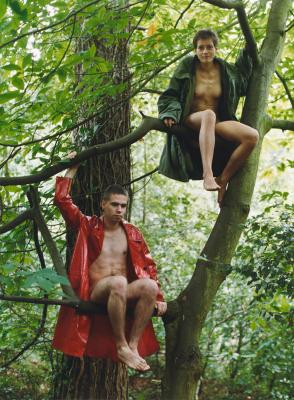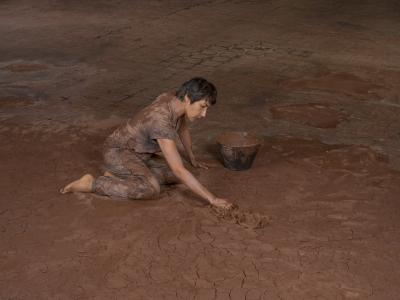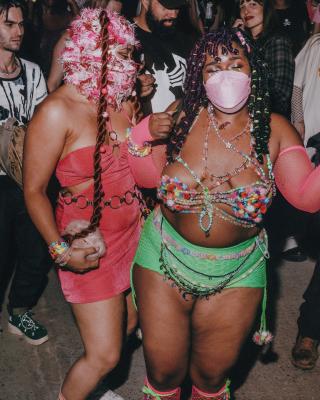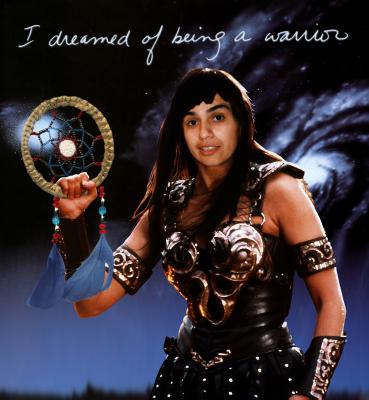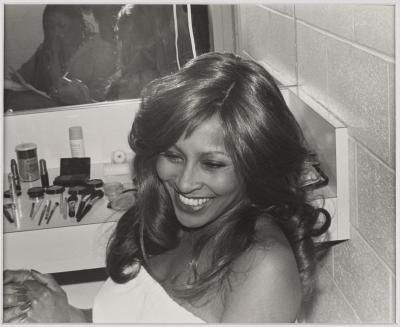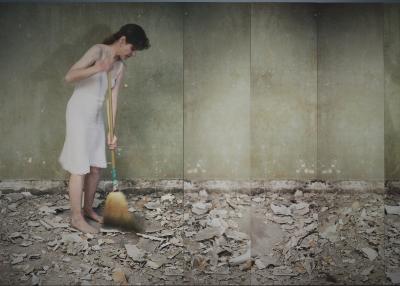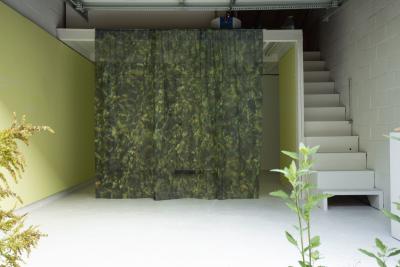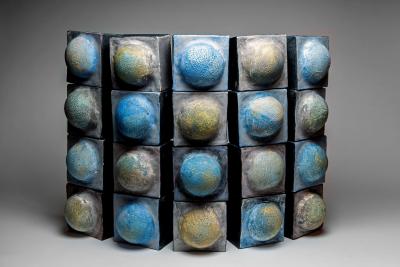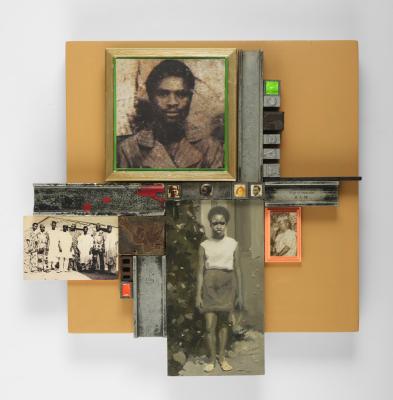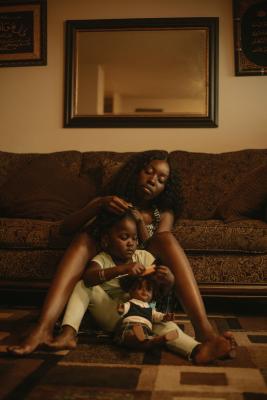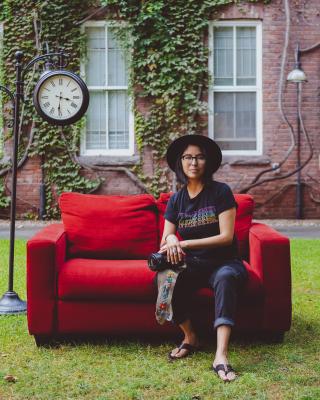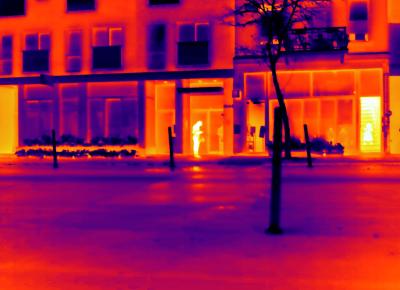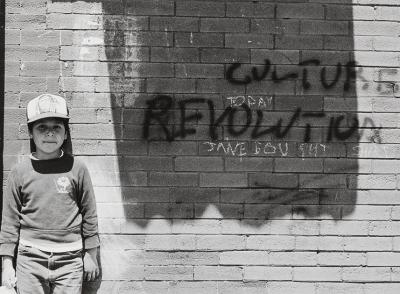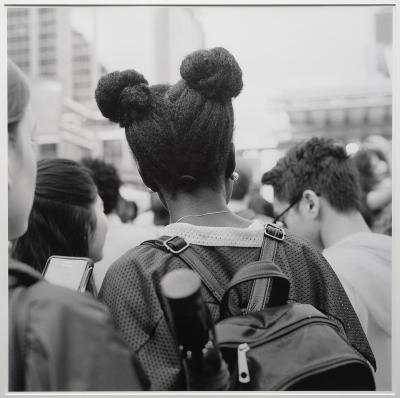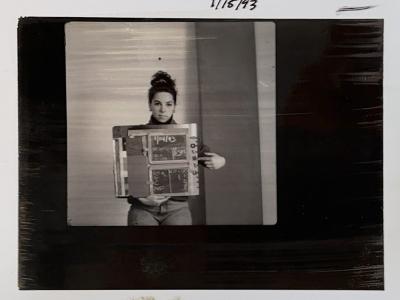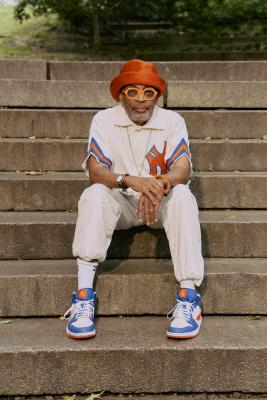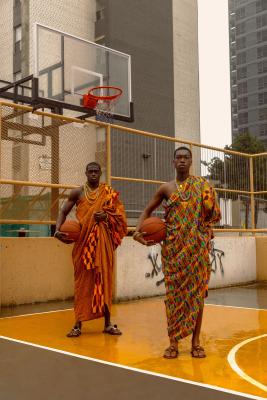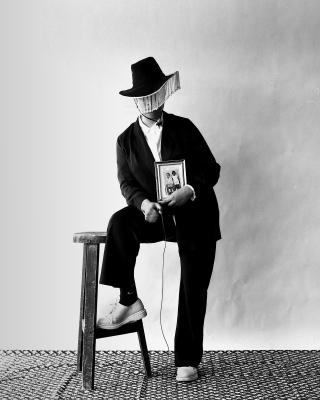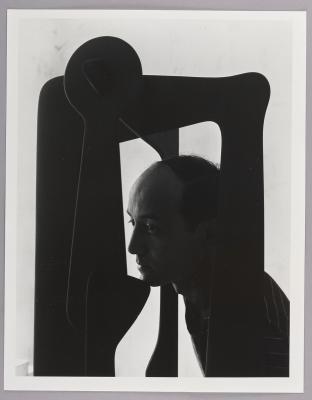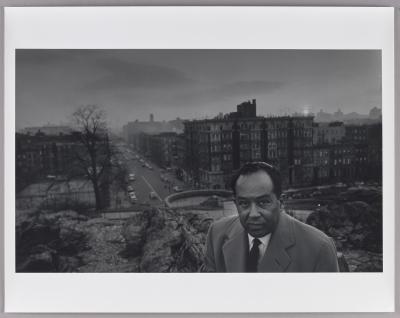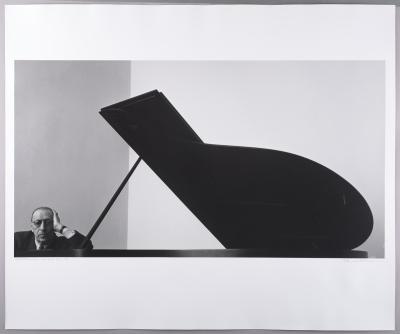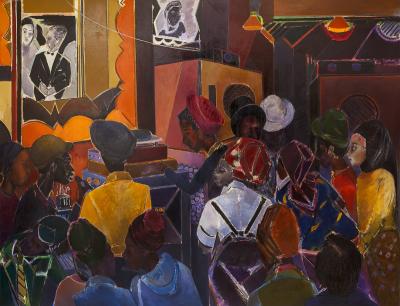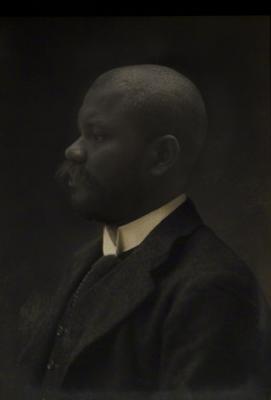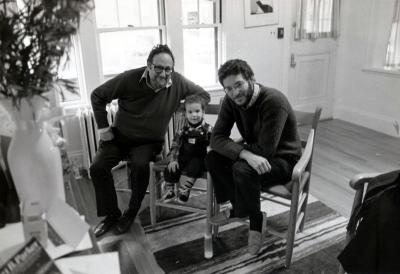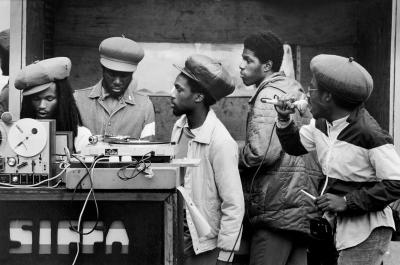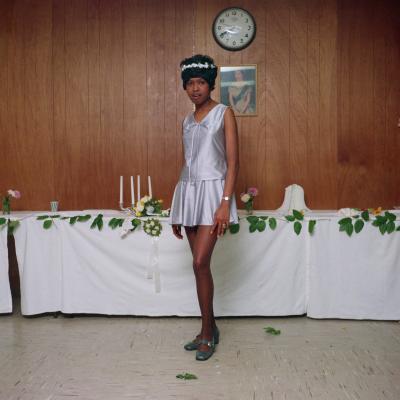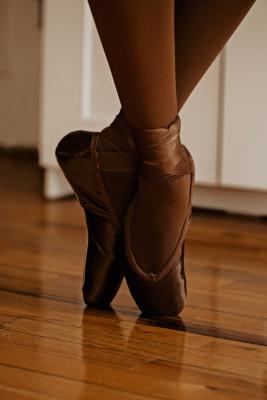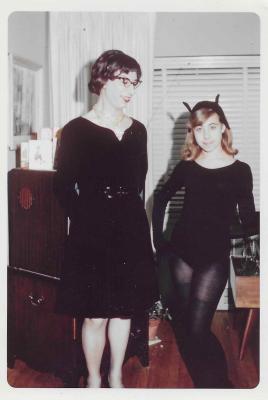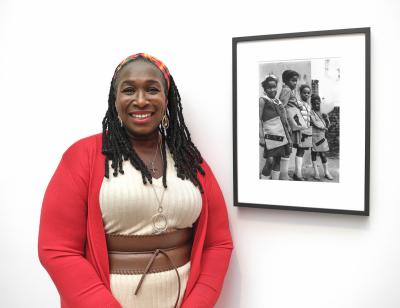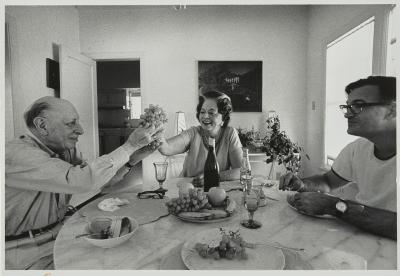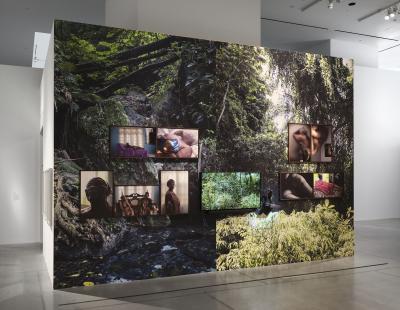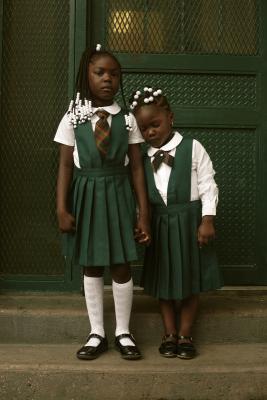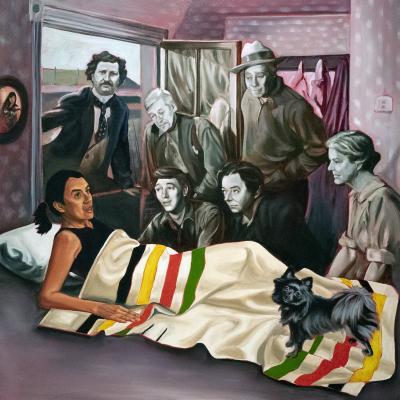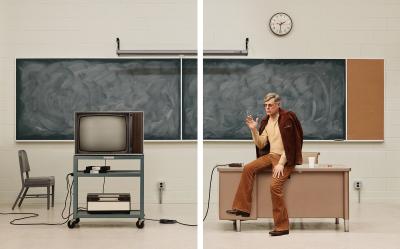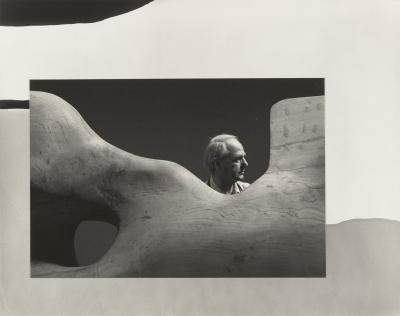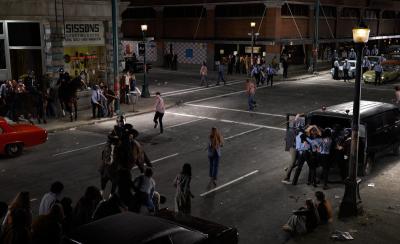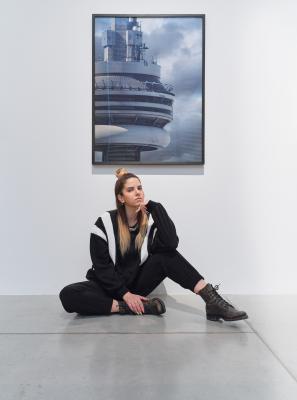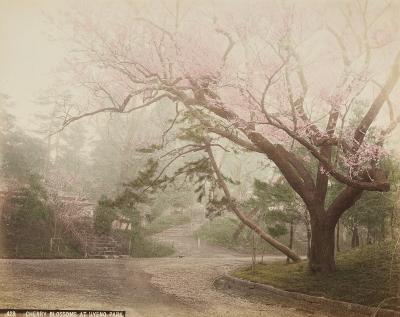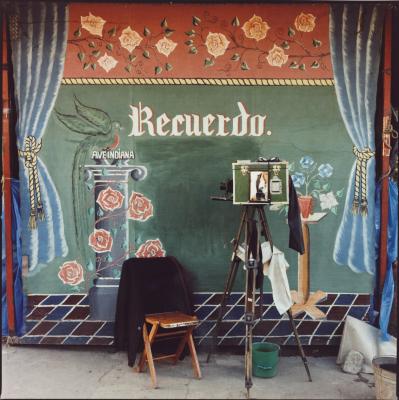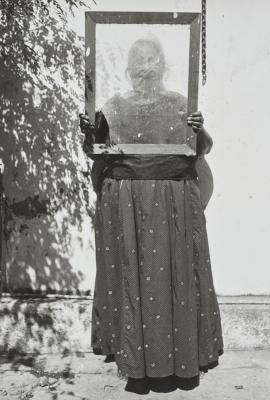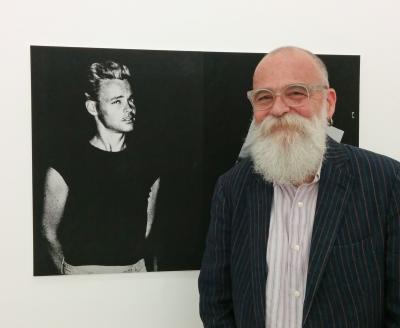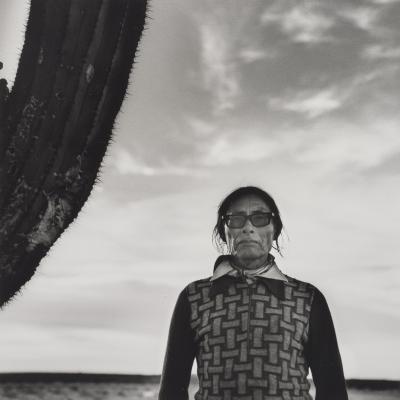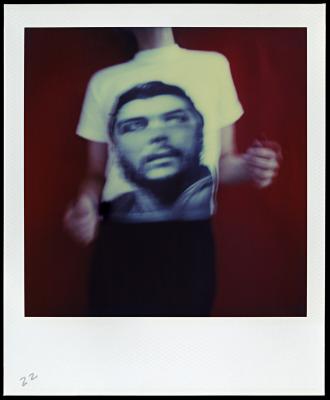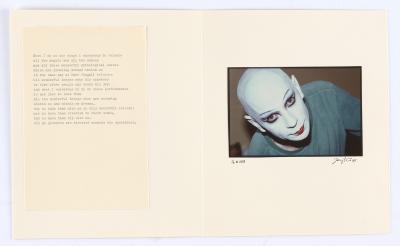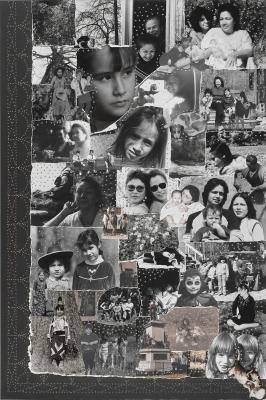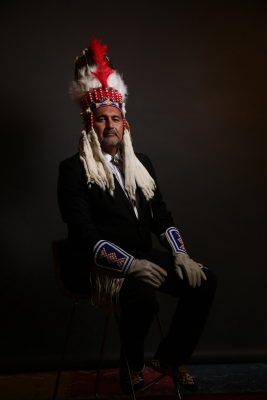Barbara Astman on Dancing with Che
The artist discusses her series of Polaroid self-portraits, on view in Recuerdo
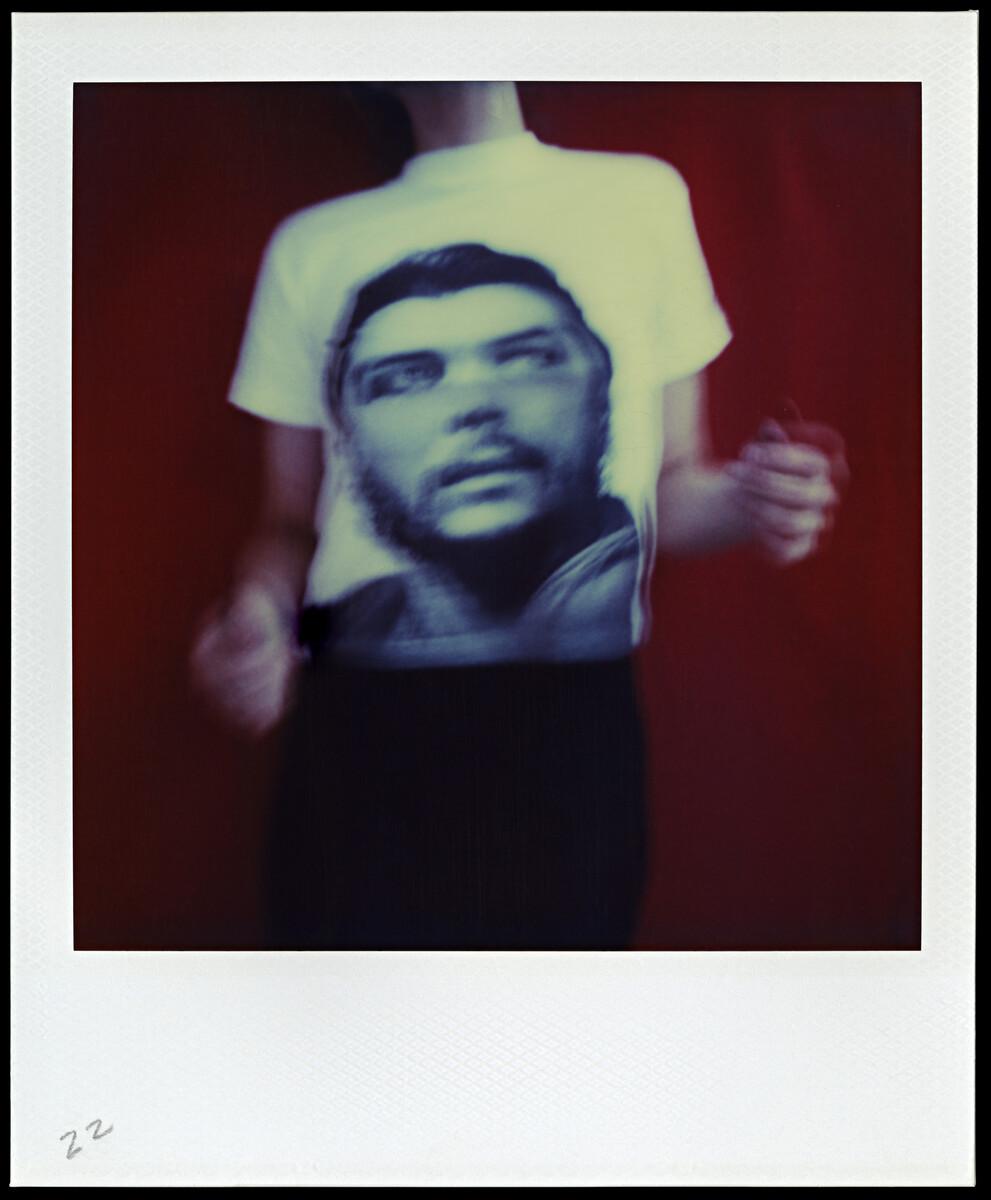
Barbara Astman. Dancing with Che #22, 2002. Polaroid SX70, Overall: 8.9 × 10.8 cm. Art Gallery of Ontario. Gift of Drs. Stephen Brown and Brenda Woods, 2021. © Barbara Astman. 2021/328
When Barbara Astman embarked on a family vacation to Cuba in 2000, she never imagined the trip would later serve as inspiration for one of the most significant works in her oeuvre. For Astman, encountering the ubiquity of Cuban revolutionary Che Guevara’s image throughout the country was arresting, most markedly because of the way it was being commodified for tourist consumption. Her observations spawned the creation of a photo series currently on view as part of Recuerdo: Latin American Photography at the AGO until October 19.
Dancing with Che (2002) is a larger series of Polaroids, of which 12 are held in the AGO Collection. All feature Astman swaying back and forth while wearing a white T-shirt with a large Che Guevara portrait printed on it. As she dances about, her movements blur and animate Guevara’s face in each photograph, evoking his presence. With this series, Astman explores the appropriation and commodification of political imagery, through the lens of her experience as a tourist engaging with a different culture. These themes resonate strongly with Recuerdo, which offers a distinctive presentation of collective and personal stories that reflect on what it means to consider art of and from Latin America.
For over five decades, Astman has experimented with a wide range of photo-based media, creating work that has garnered both national and international acclaim. Her work is held in the permanent collections of major institutions including the National Gallery of Canada, the Bibliothèque nationale de France, and the AGO. Astman spoke to Foyer about her time in Cuba, political imagery, and the importance of instant photography to her practice.
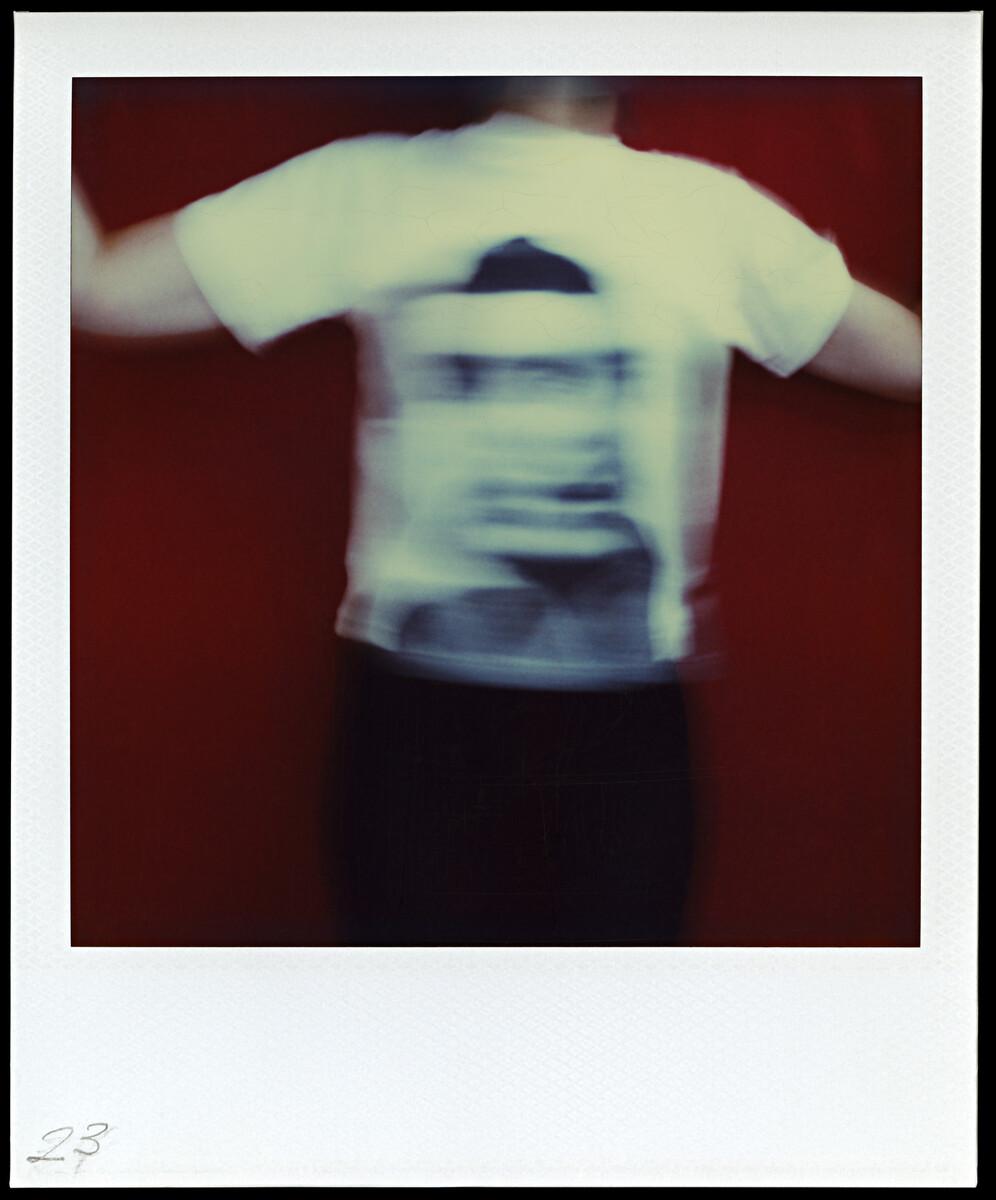
Barbara Astman. Dancing with Che #23, 2002. Polaroid SX-70, Overall: 10.8 × 8.9 cm. Art Gallery of Ontario. Gift of Barbara Astman, 2021. © Barbara Astman. 2021/324
Foyer: Can you share some details about your trip to Havana in 2000? What was the nature of the trip? Can you describe your experience of encountering the ubiquitous presence of Guevara’s image throughout the country?
Astman: In 2000, my family went to Cuba for a March Break holiday. While we were there, we did an organized tour of Havana, and I became more aware of the pervasive nature of the Che imagery. It felt like wherever you looked, there he was – on billboards, on buildings as public art. Obviously, I’m aware of him as a revolutionary leader, but I started to feel like his image was being used [more for] promotional material. When we went to a public market in Havana, I purchased many Che souvenirs, such as rings, and a beaded wall hanging, among other items. Once we were back at the hotel, I went into the gift shop and saw the T-shirt that I bought and used to create this series. What interested me about this specific T-shirt was that Che is not wearing his revolutionary hat. He looked like a handsome movie star with a magnificent head of hair! We also heard quite a bit of Cuban music on this trip, and at one of the venues, I purchased a CD by the group. Fast forward to 2002, and I found myself still thinking about the overall experience. I decided, quite spontaneously, to wear the Che t-shirt, then turn on the CD. I set up my Polaroid camera to record what unfolded.
What was it specifically about the medium of instant photography that inspired you to use it for the series?
I had been using Polaroid cameras for quite a few of my different series, as I felt the spontaneity of the process suited me dancing in front of the camera. I also felt the richness of the imagery, with the emulsion’s painterly quality, worked well for these images. Working with the Polaroid camera allows you to quickly see what you have shot, and to correct your positioning, motions, and cropping. I love that my movement from dancing altered Che’s face, and sometimes, almost abstracted his features. It was quite liberating to dance with Che and feel uninhibited in my movements.
It was a private performance, enacted with Che via a T-shirt and music in front of an instant camera, that I think allowed for this series to feel as free as it does.
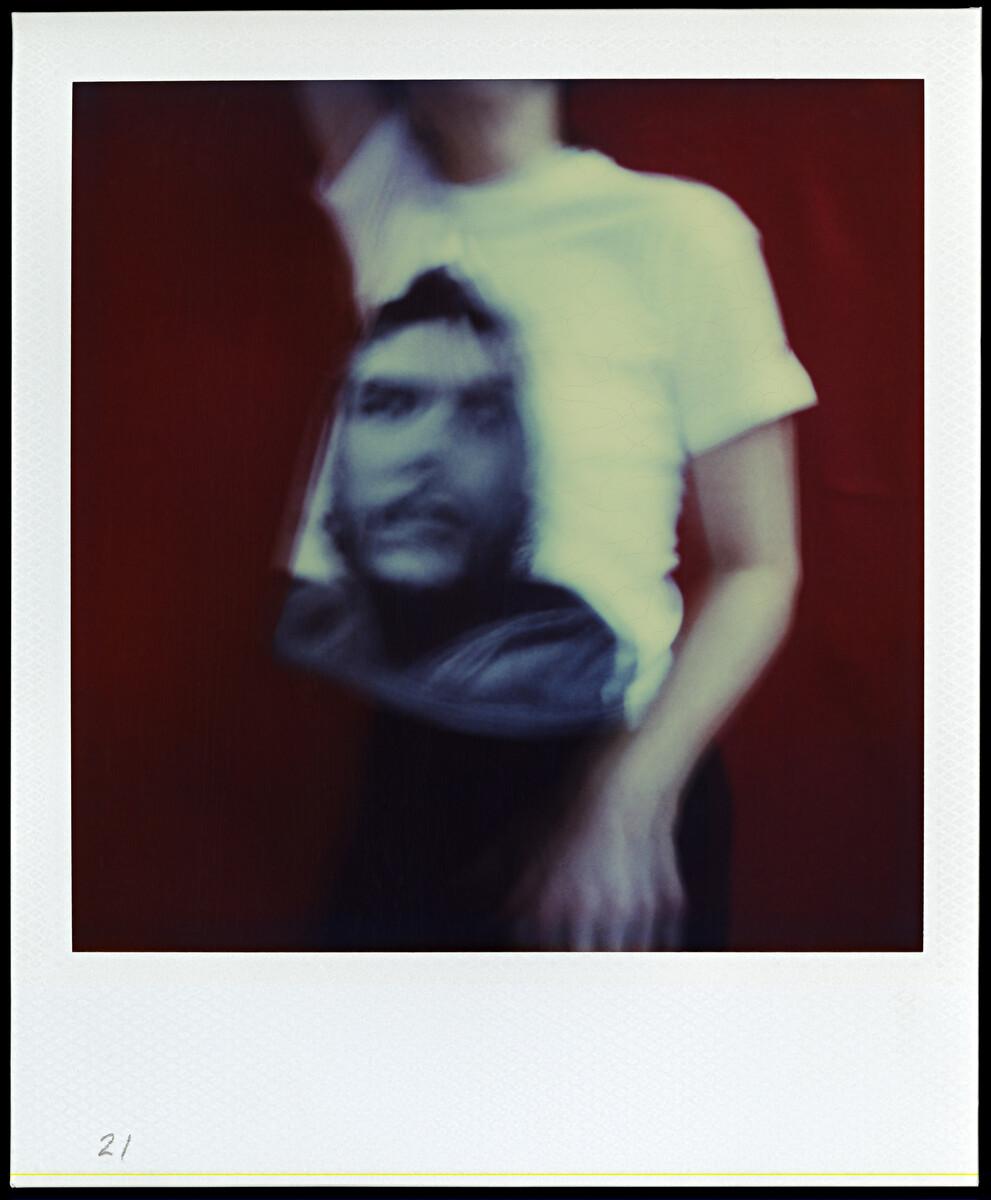
Barbara Astman. Dancing with Che #21, 2002. Polaroid SX-70, Overall: 10.8 × 8.9 cm. Art Gallery of Ontario. Gift of Barbara Astman, 2021. © Barbara Astman. 2021/323
Over 20 years later, what are your thoughts about the core ideas you were exploring in the Dancing with Che series? How, if at all, have they shifted or evolved?
I think that if I went back to Havana and encountered the onslaught of Che imagery all around me, I would feel the same. The commercialization of a revolutionary leader that now appears on coffee mugs, bathmats, and all sorts of souvenir objects speaks to our lack of a historical collective memory. I felt the need to respond to what I experienced there. When I first showed this series, I did have very young people ask me who the handsome man was.
Are there any new projects you are currently working on that you are excited about? If so, are you able to share some details with us?
Interestingly, I am currently exploring the use of outdated Polaroid film to create imagery based on both reality and abstraction. I am thoroughly enjoying the spontaneity of the process and frankly am loving the materiality of the process. I do mourn the demise of Polaroid, both the film and the equipment, so it was with mixed emotions that I have now used up all of my outdated film. It made me wonder why I was holding on to it for so long, and then I realized I was just not ready to let it go.
Recuerdo: Latin American Photography at the AGO is on view now until October 19 on Level 1 of the AGO in the Edmond G. Odette Family Gallery (gallery 128) and Robert & Cheryl McEwen Gallery (gallery 129). Find out more about Dancing With Che and Recuerdo in the exhibition’s free digital publication, produced by the AGO.

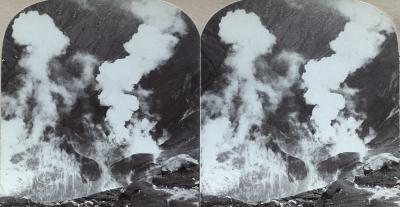

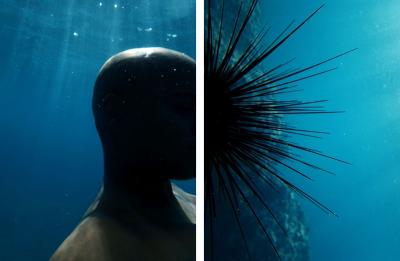
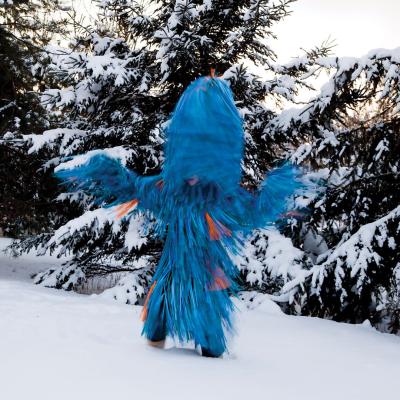
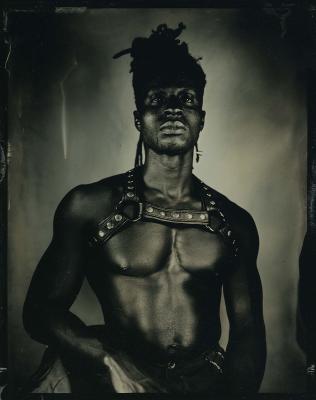

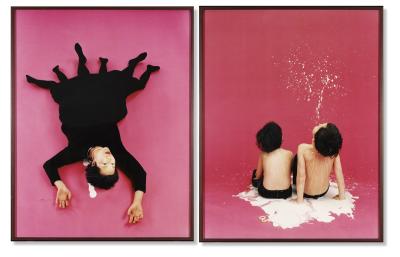
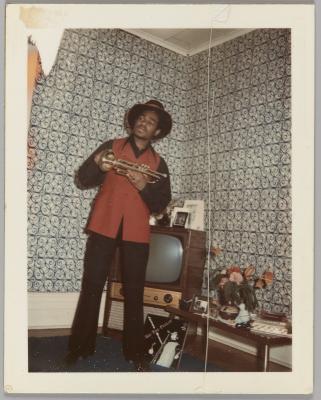
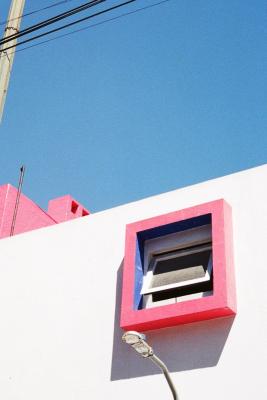

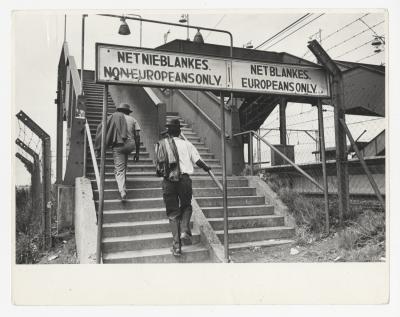
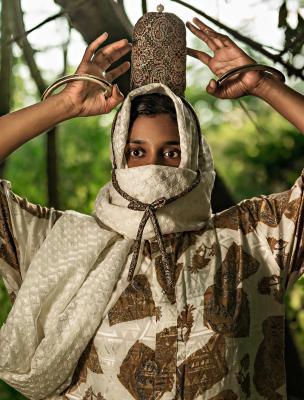
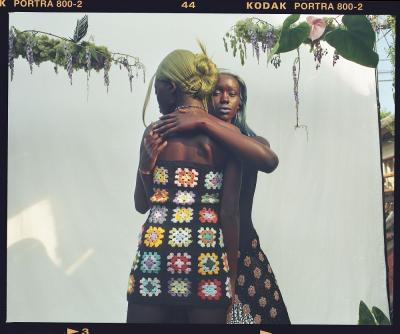
![Unknown photographer, Chillin on the beach, Santa Monica [Couple on beach blanket]](/sites/default/files/styles/image_small/public/2023-04/RSZ%20WMM.jpg?itok=nUdDiiKr)
